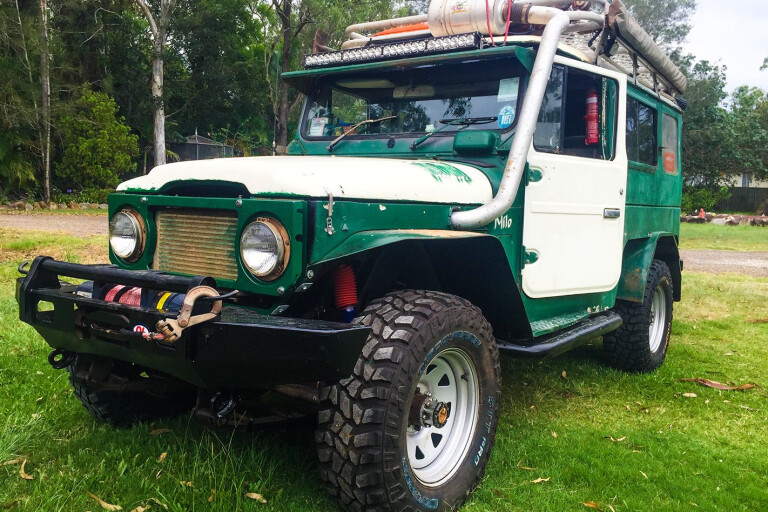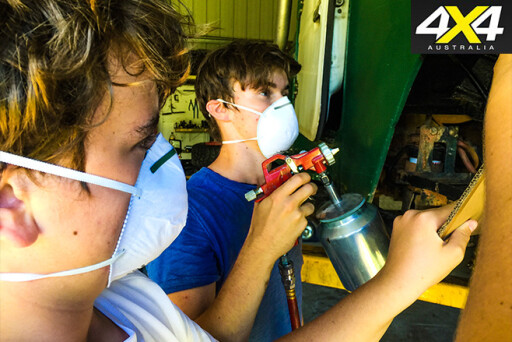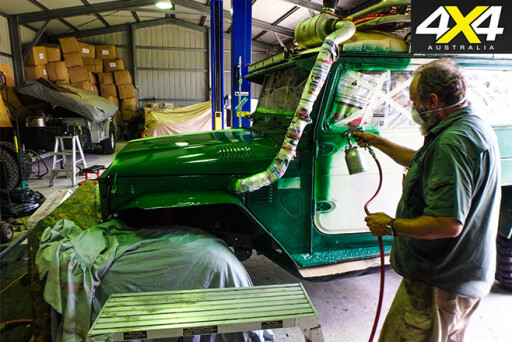
For most vehicle owners the prospect of a fresh paint job is pretty daunting. To get it right means agonising over surface preparation, running down through grades of wet and dry, and then painting and polishing to perfection. The results are worth it, though, especially come resale time.
As a teenager living in the country I used to tinker with all my cars and bikes. I didn’t have much money and I didn’t have anybody telling me what I was doing might be wrong. There were some classic stuff-ups along the way, but the first time I spray-painted a car was one of the most glorious experiences I’ve ever had.
It was an FJ Holden. The doors were three different colours and the bonnet different again. About 20 years’ worth of wear on the old paint meant the car looked like absolute crap, which was a pity because mechanically it was pretty much sorted.
 Originally I was going to attack it with a brush using a ‘warm-the-paint’ method I’d read about in an old magazine. However, the local hardware store had just got this newfangled electric spray gun in stock, so – armed with a tin of enamel, some turps to thin it and a copy of the Sunday paper – I launched in.
Originally I was going to attack it with a brush using a ‘warm-the-paint’ method I’d read about in an old magazine. However, the local hardware store had just got this newfangled electric spray gun in stock, so – armed with a tin of enamel, some turps to thin it and a copy of the Sunday paper – I launched in.
It went on with more than the odd dribble but by late that afternoon I couldn’t resist plucking away the masking paper. The result, from about 10 feet back, was like a new car.
I was in love.
Unfortunately, my girlfriend of the time almost fell out of love when she saw the strange yellow colour – it looked great on the brochure – and the ‘orange peel’ surface. A week later, after I’d hand-painted orange and red flames up the side of the bonnet, she was ready to leave.
 During our mining years, my brother and I painted all our trucks, bikes, ladders, hoists and anything else made from steel much the same way.
During our mining years, my brother and I painted all our trucks, bikes, ladders, hoists and anything else made from steel much the same way.
The years taught us much about air compressors, thinners and getting the surface right, but nothing ever killed the joy of peeling back that paper and tape and seeing a new machine emerge in all its glory.
We mostly used roof and metal enamel because it handled the sun and stuck to almost anything, and our gear used to handle corrosion a whole lot better than most because of it. The additional facts that it looked better than it was, didn’t cost much, and involved an excuse for a carton of beer on a Sunday were almost irrelevant.
When I bought Milo some 20 years ago she was a dirty white colour and already had a few bits of rust cut from the rear panels thanks to our local scoutmaster’s camping trips up the beach. I don’t think he’d washed it in 20 years of ownership. (Almost) the first thing I did was invite my neighbour, Long Bruce, over for a Sunday of fun with a litre of enamel and a carton of beer. By the end of the day Milo looked great in a shiny coat of green and, thanks to a late afternoon breeze and the slow-drying properties of thinned enamel, most of our street was colour-coded green, too.
 Now I’m thinking I’ve probably painted Milo every second year or so since then. Sometimes it has been because of major body work, sometimes a change of sponsors – which has meant plenty of paint peeling off behind the old stickers – and sometimes just because the old coat looked shabby. But you’ve only got to watch the rain bead up and trickle off a coat of enamel to realise fresh paint is the best way to keep the rust at bay.
Now I’m thinking I’ve probably painted Milo every second year or so since then. Sometimes it has been because of major body work, sometimes a change of sponsors – which has meant plenty of paint peeling off behind the old stickers – and sometimes just because the old coat looked shabby. But you’ve only got to watch the rain bead up and trickle off a coat of enamel to realise fresh paint is the best way to keep the rust at bay.
You know what? Even now, some 43 years after I peeled the paper off that FJ Holden, I still get an incredible buzz when revealing a fresh paint job. However, this time around was even better, because halfway through I realised the paint was actually a different shade.
Yep, during one of those ‘meet and greet’ sessions at a show the guys from Luxury Paints in Toowoomba handed me a four-litre tin of enamel and said: “There you go Roothy, a little contribution to Milo’s next paint job.”
It was meant as a joke, but after sitting in the cupboard for more than a year I figured I’d save a few bucks on the usual roof and metal and give this stuff a go. It stirred up really well with the electric drill and spinner, thinned nicely to ‘slide off the stick’ viscosity and blew on with no problems at all.
You’ll have to wait until next month to see the result, but when it dried it was glossier, too.
Milo’s now brighter and bolder than ever – and pretty soon I’ll get the green tinge out of my beard.

COMMENTS